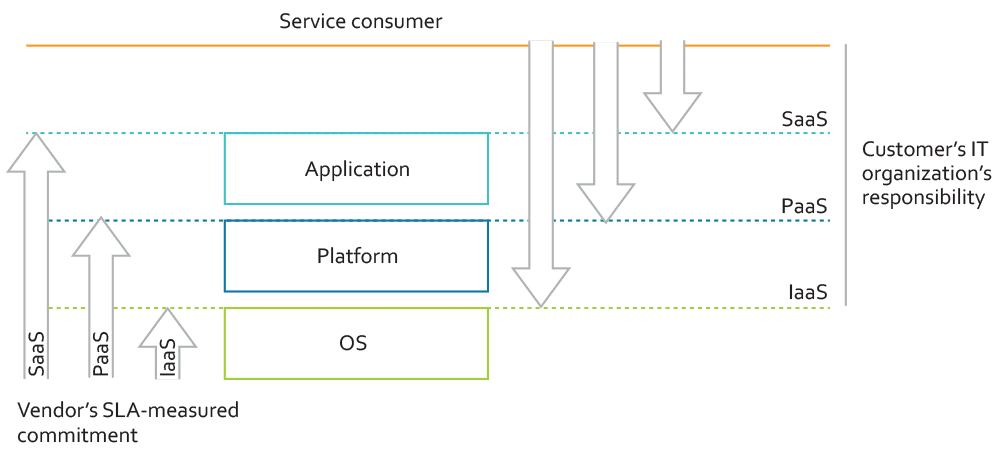
INSIGHT
What you buy is what you get (but not always what you want)
When you plan to migrate from a self-hosted to a cloud-hosted infrastructure you probably first of all focus on service providers’ technologies and business models. But the migration also raises a wide range of other urgent questions. As a customer of a cloud infrastructure services, you take on new types responsibilities which your organization may not have prepared for. The shift means innovation leadership and application life-cycle management, especially for homegrown applications, will have to adapt.
The dynamics and the speed with which technical change elevates IT is difficult to capture in Service Level Agreements (SLA). The SLAs, by nature, are static, while applications and services dynamically evolve. Agreements intended to provide assurance that clients get what they pay for can even cause an unintentional conservation of status quo.
You get not what you ask for but what you easily measure through SLAs: server uptime, service request response times, the time needed to fix an incident or a problem, etc. Do these controls ensure you enjoy the benefits of innovation and optimization? Or are they incitements for providers to continue business as usual although the world has already changed?
Application life-cycle management and cloud infrastructures challenges

The figure illustrates how cloud computing models, whether they provide infrastructure (IaaS), platforms (PaaS) or software (SaaS) as a service, leave the client with responsibilities in relation to service consumers. The cloud service provider concentrates on meeting SLA requirements. But this does not necessarily cater for all end-user needs. They may need further support to become productive contributors within their organizations.
Thus, the client’s IT organization still needs to make sure end-users can access and use the service as intended. And if this service involves contributions from multiple vendors, they all need to be coordinated.
The IT department that disappeared
In the “good old days” – or “horrible days” – whatever you prefer, when the organization’s own IT department delivered IT services, end-user’s called “IT” to resolve issues. If the IT staff was service-minded and knowledgeable, this helped solve problems without much bureaucracy. Furthermore, it helped the IT organization to understand the needs of users and the CIO to push for innovation.
Those who remember the horrible times may object that innovation rarely was possible. The IT department was not sufficiently flexible and innovative, or it lacked the necessary resources. Nonetheless, replacing the IT department with an SLA-driven XaaS vendor leads to a cultural shift.
You cannot outsource your own innovation leadership
In our experience, the greater the customer’s responsibility, the greater the challenge. Does the organization run homegrown applications on its IaaS provider’s infrastructure? This typically leads to new requirements on application life-cycle management. The IaaS vendor meets SLA requirements but does nothing to ensure the application is duly maintained. The client’s in-house or contracted developers must play a role in the service delivery chain. Thus, 1st line, 2nd line and 3rd line support procedures require many parties to cooperate.
Innovative and proactive application life-cycle management therefore has to integrate with and complement the cloud service.
At Data Ductus, we are used to situations like these. In fact, we have a whole service area focusing on application life-cycle management both from an ITSM and a systems development perspective. And we are always looking at new ways to ensure clients get the benefits of innovation. And we go beyond the narrow scope of SLA check boxes. If you are interested in exchanging experiences, do not hesitate to let us know.
